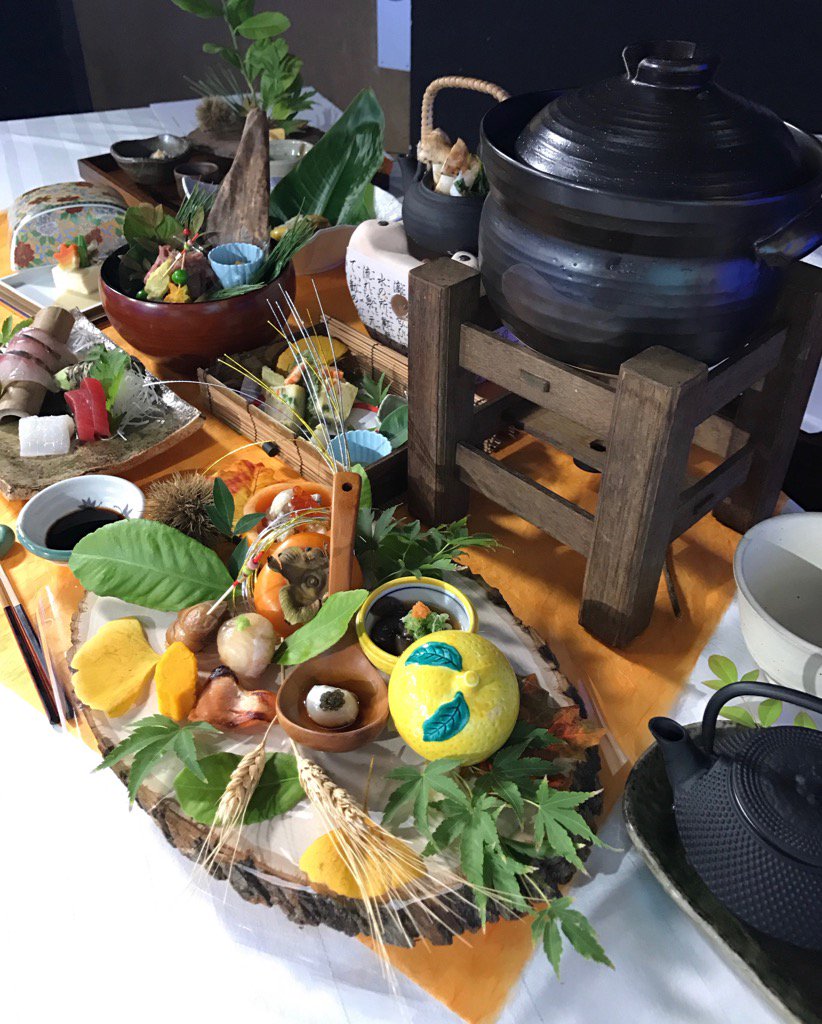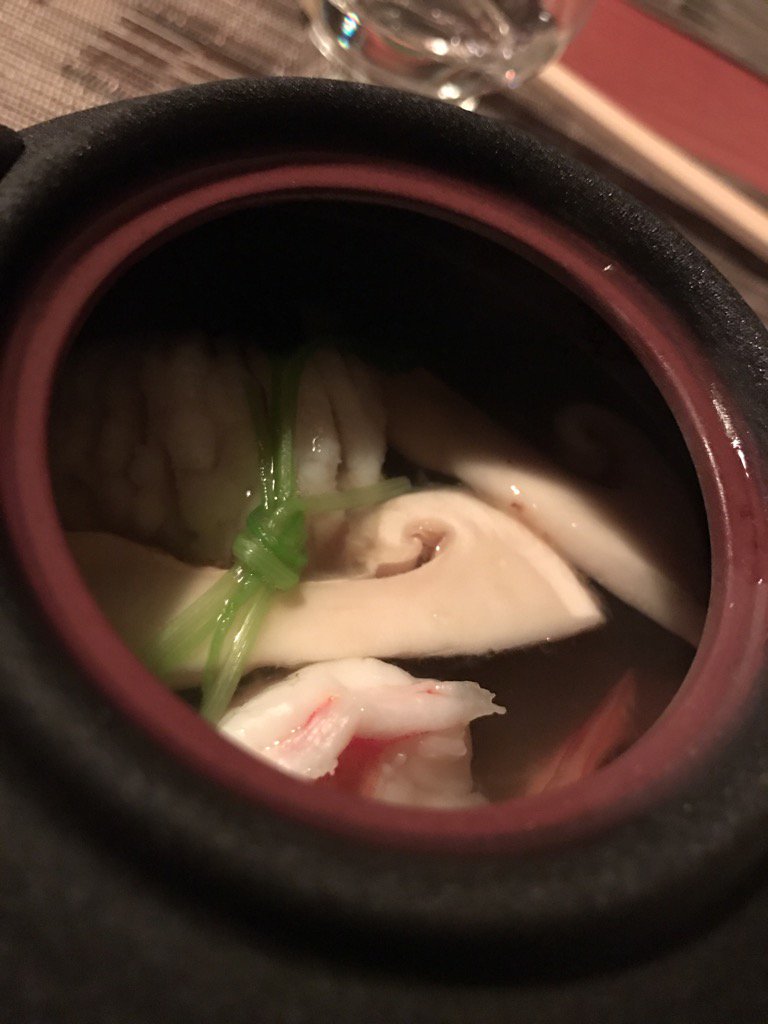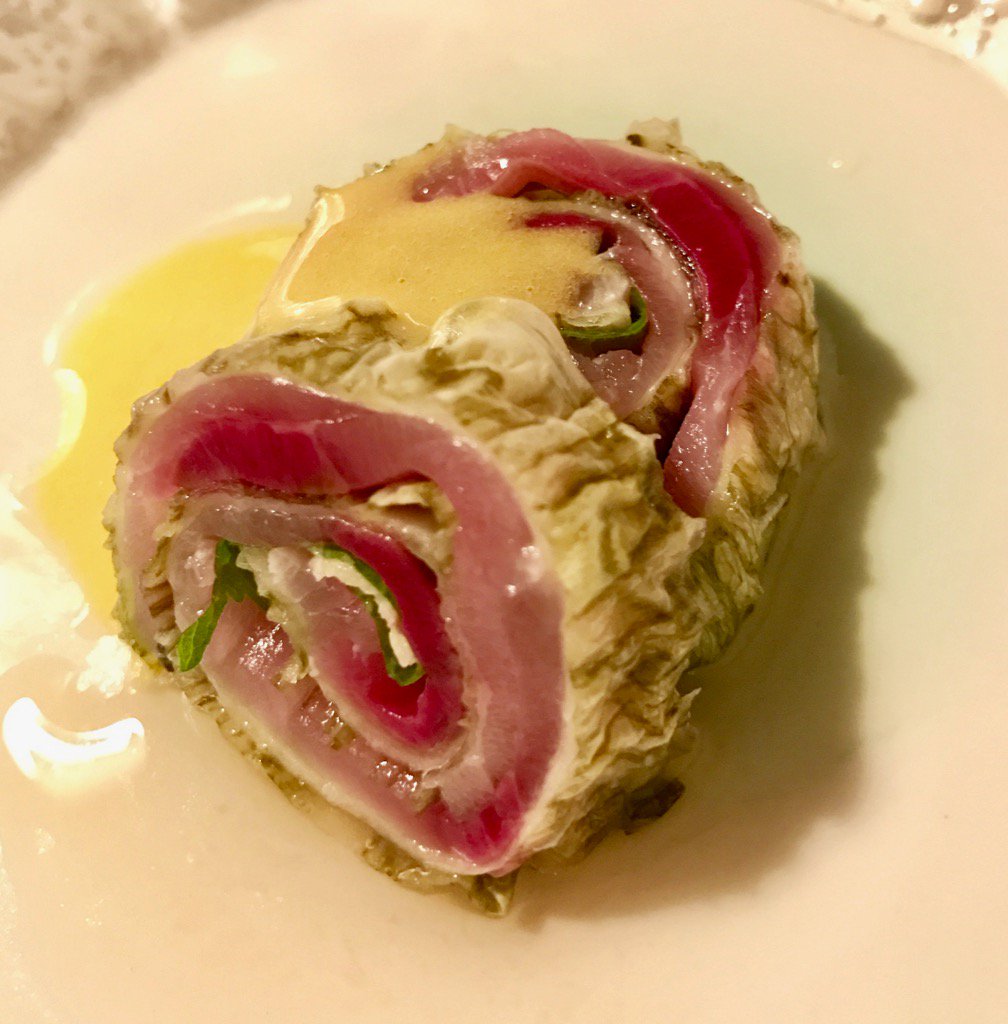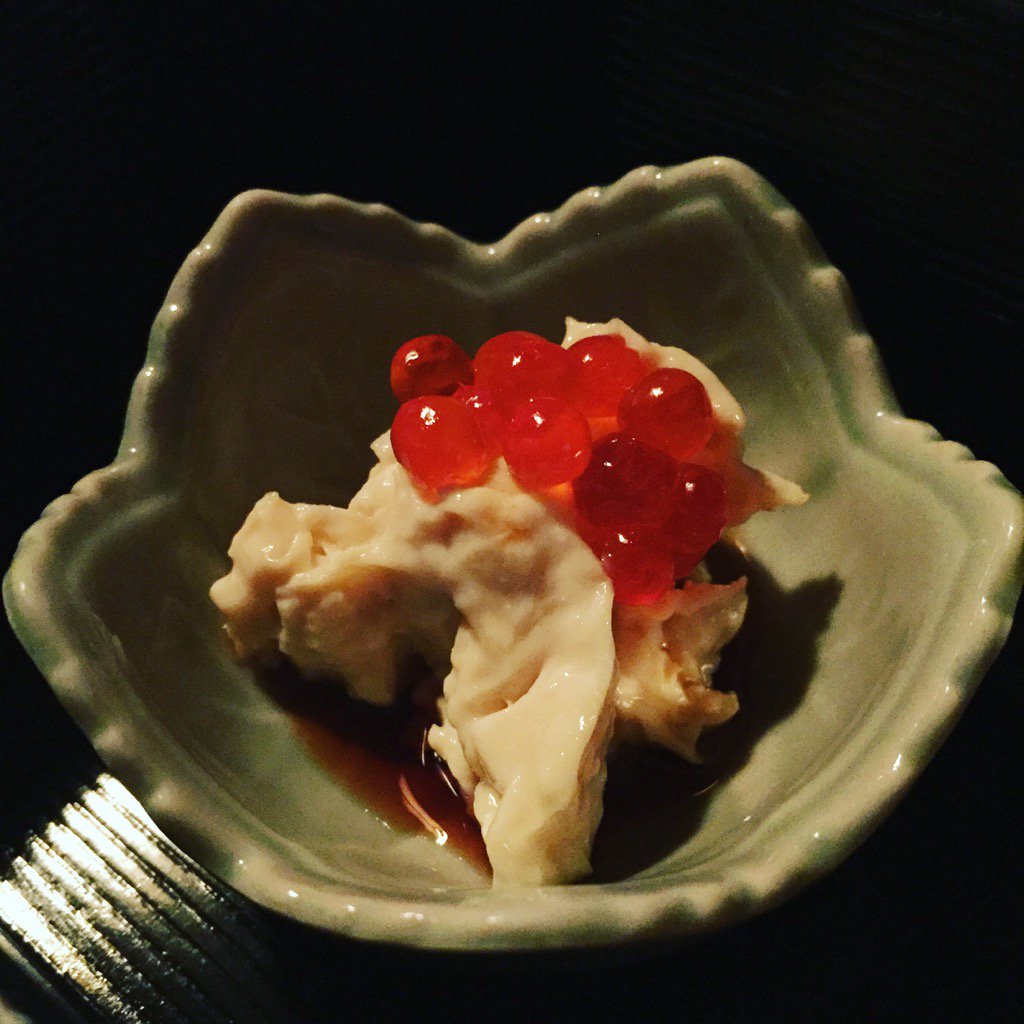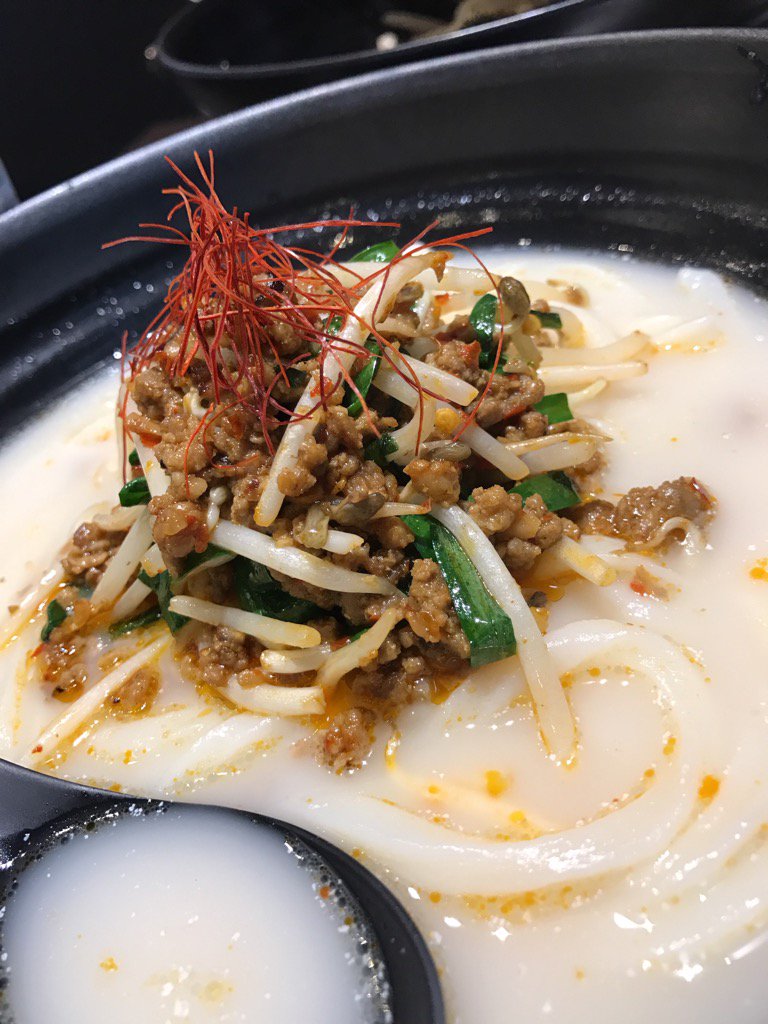
With the opening of Monta seven years ago, informal, Japanese eating took a giant leap forward and has never looked back. But one thing has always been missing: an udon parlor to call our own. Thankfully, yet another Southern California import — Muragame Monzo Udon — has now planted its flag here, allowing our Chinatown to take yet another small step towards ubiquitous deliciousness.
For the uninitiated, udon are thick, white, long strands of wheat starch. These are not noodles to be contemplated; these are carriers for a variety of sauces and toppings, adornments that Monzo delivers in spades. To taste them in their purest form, try them cold (bukkake* style) doused with a clear, intense broth. Of the “signature udon” that we tried, the Food Gal® is partial to the Mentai Squid Butter (flecked with crunchy fish roe and bits of squid), while I found no fault with the Hot Dragon Udon (pictured above) — it being dressed with lots of spicy ground pork and Chinese chives. Some people are fond of the Miso Carbonara and Sea Urchin Cream versions featured here, but to my mind, these overwhelm the chewy, wheat-i-ness of the noodle, and thereby miss the point.

Not to be outdone, Shang Artisan Noodle (pictured above) brings a Chinese spin (and that wonderful, hand-tossed lamian) to west Flamingo Road. I’ve always considered the way they can pull and toss and stretch a huge wad of dough into individual strands of noodles to be an ancient form of Chinese magic. There’s also something magical about the dense, beefy broth that accompanies the Shang Beef Noodle, or the dry, spicy kick of their dan dan mian:
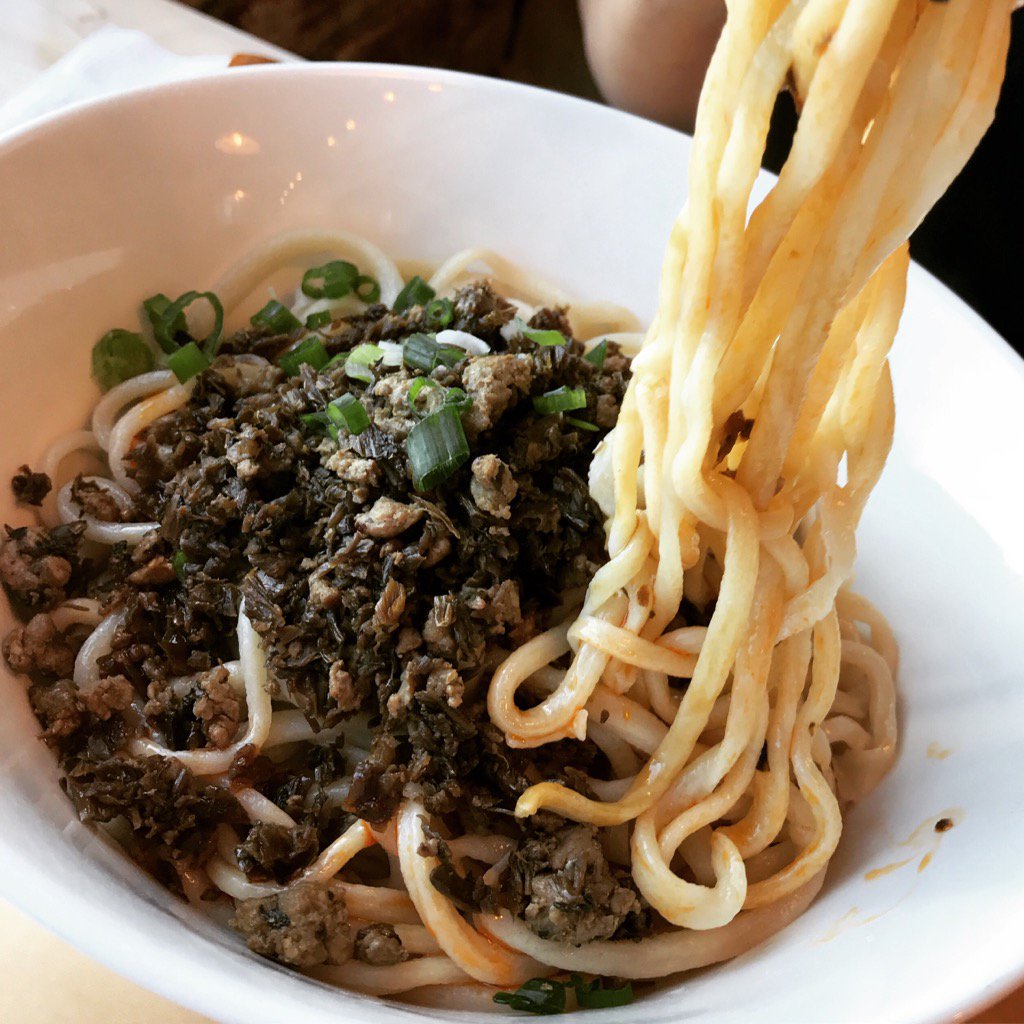
…. or the over-the-top chewiness of the Beef Pancake — it being more like a large, juicy, xiao long bao stuffed with a steamed, onion-flecked hamburger:

I don’t wish to start an international incident, but it’s now a dead heat as to who makes the best thick Asian noodles on earth.
MURAGAME MONZO UDON
3889 Spring Mountain Road
Las Vegas, NV 89102
702.202.1177
https://www.facebook.com/marugamemonzolv/
SHANG ARTISAN NOODLE
4983 W. Flamingo Road Ste B
Las Vegas, NV 89103
702.888.3292
https://www.facebook.com/ShangArtisanNoodle/?ref=py_c
* Do not, under any circumstances, look this up.
